SUMMARY
This is AI generated summarization, which may have errors. For context, always refer to the full article.
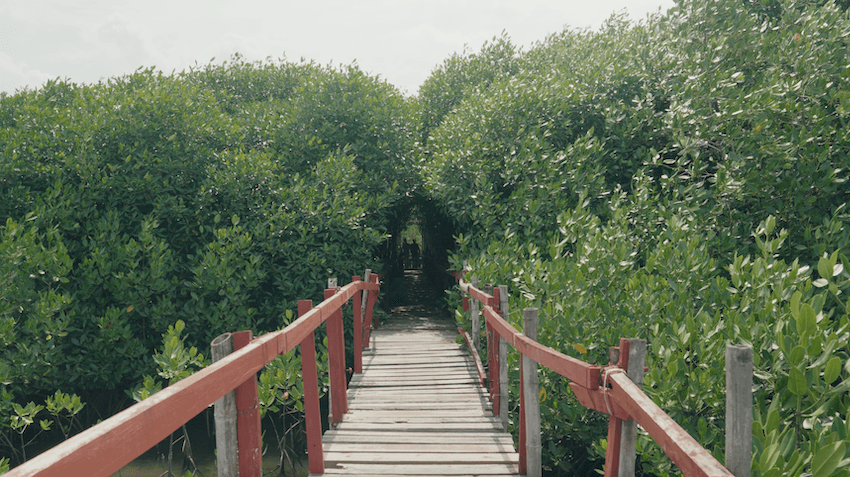
This story is part of Rappler’s series on the 10th anniversary of Super Typhoon Yolanda (Haiyan).
Yolanda was one of the most powerful typhoons in history to hit land on November 8, 2013. The super typhoon claimed thousands of lives and displaced millions from their homes. Ten years later, Rappler visits some of the affected communities to see what life has been like since the disaster.
TACLOBAN, Philippines – Growing up, Roque Regis believed that the mangrove forest in their barangay in San Jose, Tacloban City, was home to mythical creatures like engkantos and kapres.
In the afternoons, he and his playmates would take the fruits of tangal or the yellow mangrove and use the shells as projectiles for their toy blowguns.
Their village is called Barangay Paraiso – the Filipino word for paradise – and overlooks the Cancabato Bay. When Super Typhoon Yolanda (Haiyan) struck in 2013, Regis saw his old playground awash with dead bodies, carcasses, fallen trees, and floating vehicles. Regis recalled the mangroves were flattened, and only the smaller ones survived. Some were left standing but were already dead.
He said that a year in the aftermath, they would still discover skulls and disembodied body parts in the place where the mangrove forest once stood.
More than a playground, mangroves provide protection for coastal communities as they reduce the impact of storm surges and flooding in coastal communities. They also provide habitat for fish and sea creatures, to the benefit of residents whose primary livelihood is fishing.

Regis’ house – located near the barangay hall that also served as an evacuation center – was saved from the wrath of one of the strongest storms to make landfall.
At a time when many of the survivors in his city left, he stayed. As stories go, those who stayed were the ones burdened to scour the earth and waters.
Regis said he doesn’t believe in luck. Anyone who had to go through what they did never really had luck on their side.
“‘Pagkalipas ng bagyo, wala namang ibang pupuntahan,” he told Rappler. (After the storm, there was no other place for us to go.)
They had to clean the area and cut down the snags before their community could start reforestation of mangrove seedlings in 2014. According to Regis, back then, they were not completely in the know of how mangroves benefited them. All they knew was that they had to build back.
“Halos buong taon naglinis kami dito,” he said. “Pinutol namin ‘yung mga patay na puno na nakatayo, tapos binunot namin, saka nagsimula ‘yung reforestation.” (It took us almost a year to clean up here. We cut off the dead trees that remained standing to start our reforestation.)
Today, 10 years after Yolanda, tight-knit mangroves line the coast of Barangay Paraiso. The canopy of trees cover a short, wooden walkway that leads out to the Cancabato Bay, where some floating huts and fiberglass fishing boats are parked.
The bay is home to milkfish, lapulapu, jellyfish, and shellfish. It was declared a Marine Protected and Fishery Reservation Area in 2003. It’s the responsibility of the local government to protect and conserve the bay.
The reforested mangrove area is now called the Paraiso Mangrove Eco-Learning Park. Regis serves as the vice chairperson of the association that manages the park.

At 59, Regis still believes in engkantos and kapres. Sometimes, when he’s in the forest, a branch suddenly falls or a breeze rushes down his back. Whenever that happens, he talks to the deities as his elders had taught him.
He believes in the saving grace of mangroves. He is also proud of what the association has accomplished in the last decade. But their association fears for the mangroves’ health now that the construction of a P3.46-billion ($60.87 million) causeway project is underway.
For Regis and the association, the construction of the causeway will be the beginning of other reclamation projects along the coast that could destroy the mangroves.
“Takot kami sa causeway kasi sa tingin namin, ang causeway [na] ‘yan ang gagawing instrumento para patayin ‘yung Cancabato Bay,” Regis told Rappler. “Para ma-justify nila na patay na ‘yung bay, puwede na i-reclaim.”
(We are afraid of the causeway because we think it would be used to kill Cancabato Bay and justify potential reclamations.)
Currently, there are fears that the causeway is already harming the seagrass in front of city hall.
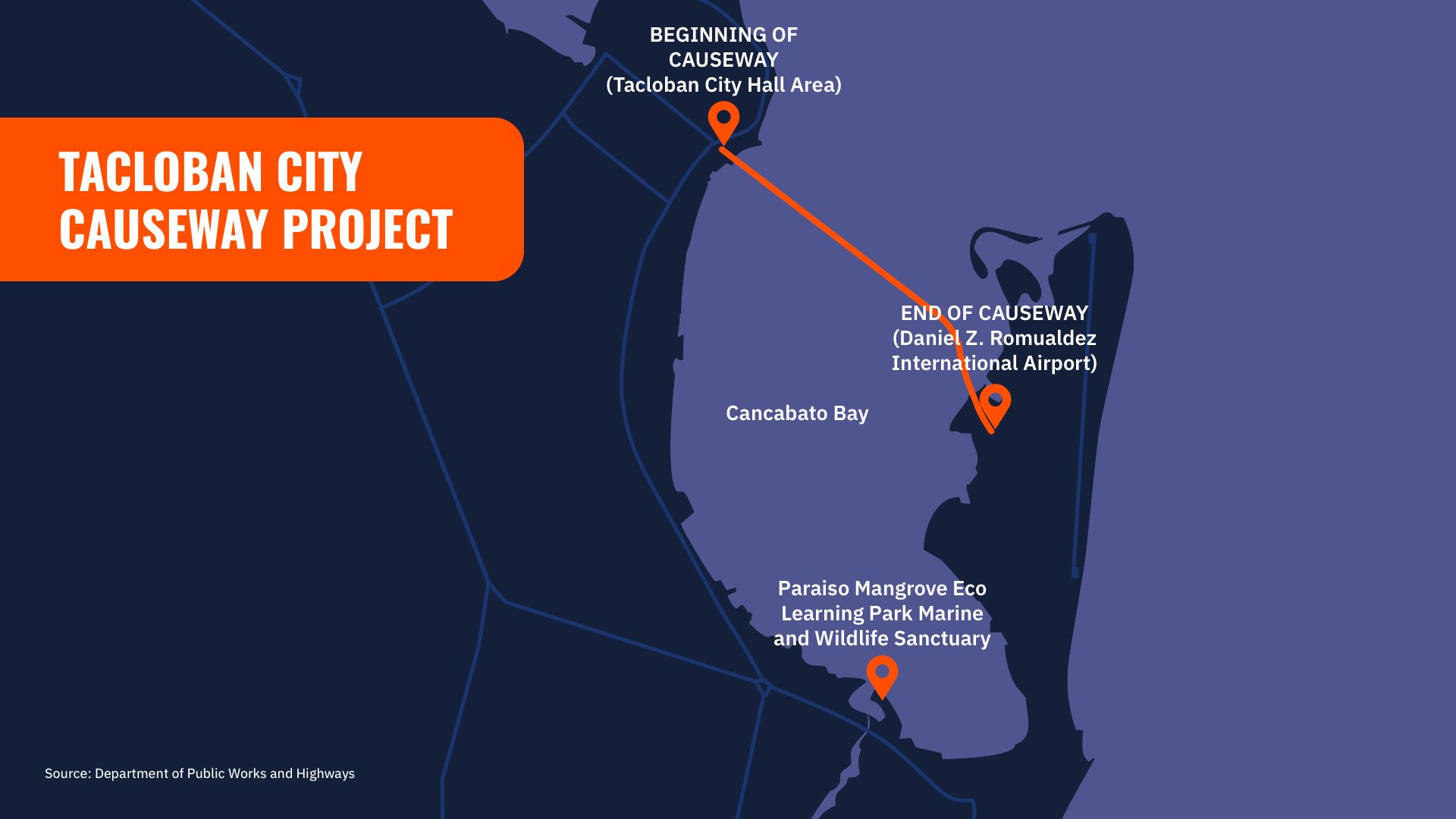
Causeway effect
The Tacloban City Causeway Project will be constructed over Cancabato Bay, connecting the Tacloban City Hall, located along Magsaysay Boulevard, to the Kataisan point of the Daniel Z. Romualdez Airport, the gateway to Eastern Visayas.
The Department of Public Works and Highway (DPWH) said the project will improve the travel experience for motorists who want a “scenic drive,” as well as pedestrians who prefer to walk, run, or bike.
The causeway features a four-lane road embankment measuring 2.56 kilometers and a bridge spanning 180 meters. It includes a separate bike lane, concrete canals, sidewalks, and wave deflectors.
It is just one of the many structures planned to be developed along Cancabato Bay. According to Tacloban’s Comprehensive Land Use Plan for 2017 to 2025, the Cancabato Central Business District is envisioned to rise amid the coastal area of more or less 400 hectares.
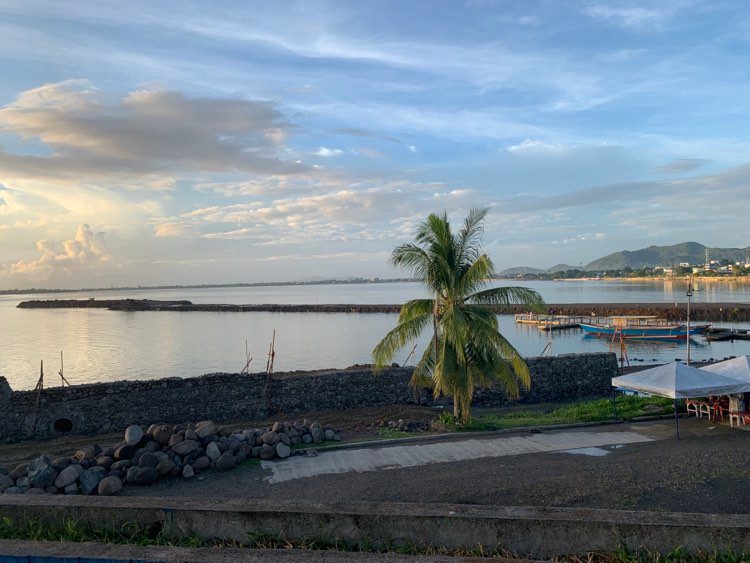
Takot kami sa causeway kasi sa tingin namin, ang causeway [na] ‘yan ang gagawing instrumento para patayin ‘yung Cancabato Bay. Para ma-justify nila na patay na ‘yung bay, puwede na i-reclaim.“
roque regis
Currently, a strip of earth can be seen in front of the city hall as the DPWH got a go signal from the city council to start construction last August. It is visible from the mayor’s office located at the city hall’s topmost floor.
Oddly enough, the same land use plan that endorsed the causeway project also mentioned the establishment of a greenbelt zone along the area as a mitigation measure against tsunamis and storm surges. A greenbelt zone is usually an area of land designed to be free from urban development to preserve the environment.
The eco-learning park in Barangay Paraiso is just across the airport, five kilometers away from the Tacloban City Hall.
If a causeway is to be built, it would disrupt the marine biological environment in the bay because mangroves serve as breeding grounds for fishes and crustaceans, environmental science specialist Nancy Dayap told Rappler.
As a consequence, the volume of fisherfolk’s catch would decrease.
Dayap formerly worked for the local Bureau of Fisheries and Aquatic Resources and currently teaches at the University of the Philippines (UP) Tacloban.
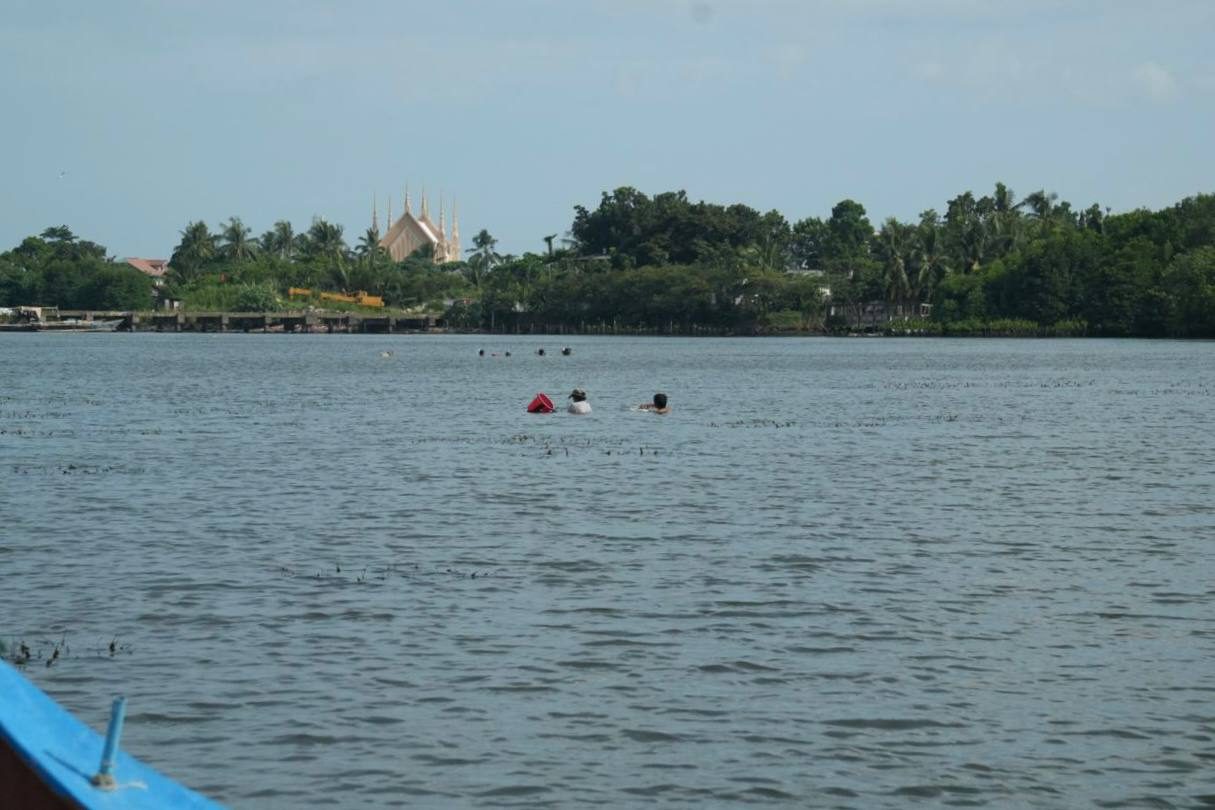
“If there are no mangroves in Cancabato, it’s possible that there would be less fish,” Dayap explained in Filipino. “The fish will lay eggs. When these grow to fingerling size, they will travel. Those will be the fish that are caught in neighboring bodies of water.”
Tacloban City Mayor Alfred Romualdez said in an interview with Rappler that there are no more fish in Cancabato Bay, contesting fisherfolk’s assertion that the housing units built for Yolanda survivors located up north are too far from their livelihood at sea.
But Dayap believes the mere presence of fisherfolk doing their livelihood there should be enough to dispel the local government’s view.
“I think we have to do some in-depth studies to prove if it would be really beneficial to convert it to a business district or let the natural environment thrive and support the living ecosystems within the base,” she added.
When Rappler visited the eco-learning park last October, the team saw residents at sea collecting shellfish near the mangroves.
“In the long run, as the mangroves grow taller, they would provide bigger protection,” said Dayap. “Whereas the causeway will deteriorate [and] depreciate through time.”
Rebuilding a city
A year after Yolanda wreaked havoc, the city government, in partnership with the United Nations Human Settlements Programme, produced the Tacloban Recovery and Rehabilitation Plan.
The plan designated the south coast, the area nearest to Cancabato Bay, as a redevelopment site with urban expansion at the inland areas.
This is where the city hall, fishing port, and other government buildings are located. Up north – where Greendale Residences, Guadalupe Heights, and other housing projects for Yolanda survivors are located – was supposed to be the satellite urban center.
According to Dakila Yee, a sociology assistant professor at UP Tacloban, the predominant idea among residents and local government officials in the immediate years following Yolanda was to rebuild the city center up north, far away from the coast.
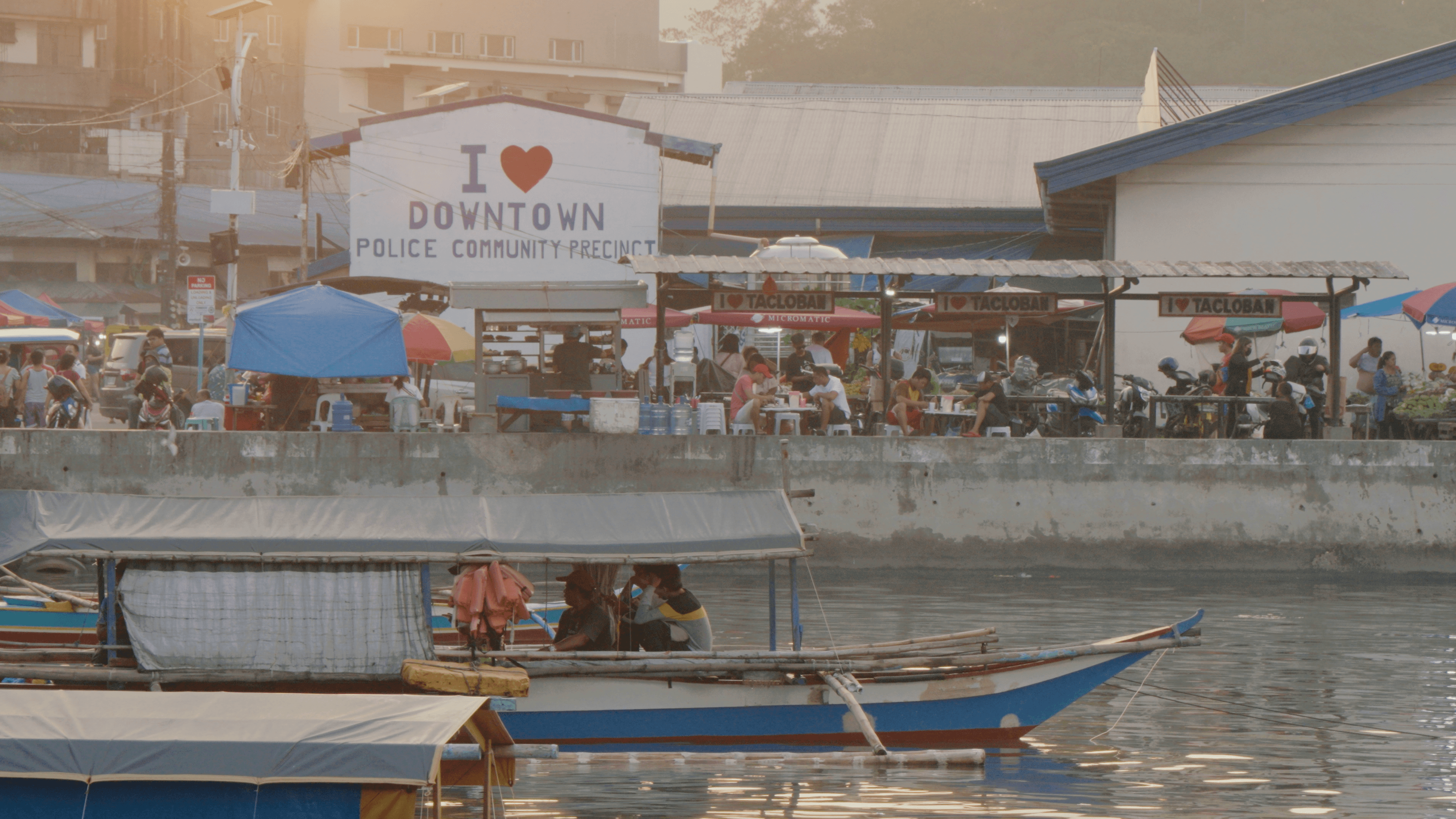
“Noong 2015, 2016, noong dine-develop pa lang ‘yung lugar, mayroon talagang wholesale idea na mag-ta-transform ‘yung northern part, ililipat ‘yung siyudad,” Yee said.
(Back in 2015, 2016, when they were still developing the place, there was a wholesale idea to transform the northern part, to transfer the city.)
But the idea seemed to have lost steam because of recurring problems on water supply and transport. Even the city’s land use plan acknowledged these problems, saying water woes in these areas are now exacerbated by climate change.
Residents of housing sites up north whom Rappler spoke with complained about regular water interruptions. In some parts of the housing sites, residents line up every day with pails to fetch water from the roaming water delivery truck.
Cancabato Bay remains the prime area for business and residence because of its proximity to the airport, malls, astrodome, and downtown.
At the forefront
At present, efforts at reforestation and maintenance of their mangrove area lie mainly with Paraiso residents like Regis.
Danika Magoncia, one of the founders of Save Kankabatok Advocacy, said the people of Barangay Paraiso understand the importance of mangroves for their protection.
Save Kankabatok Advocacy is an organization that champions the health and conservation of Cancabato Bay. Magoncia said Paraiso was one of the first villages where they started their campaign.
“Alam nila ‘yung value ng mangroves and alam nila ‘yung value din ng Cancabato Bay kasi doon kami kumukuha ng pagkain,” Magoncia told Rappler. “Madali silang kausapin. Tapos sila naman din ‘yung nag-influence ng ibang barangay.”
(They know the value of mangroves and of Cancabato Bay because that’s where we get our food. They’re easy to talk to. They’re also the ones who influence other barangays.)
According to Magoncia, their group has been in talks with policymakers at the barangay and city levels, urging them to be more wary of the projects initiated by different agencies.
They continue doing so even though the government allowed the construction to proceed last August. Before it was greenlighted, the project had been halted due to residents’ environmental concerns, which the city council wanted the DPWH to address.

The Save Kankabatok Advocacy said the causeway will also upset the culture of Taclobanons as well as the pristine view of the Cancabato Bay that they have been used to for their whole lives.
“Ang pagsira sa Cancabato ay pagtapak sa kanilang kultura at lupang kinagisnan,” one of the group’s posts read. (The destruction of Cancabato will trample on their culture and the land they have known for so long.)
Nowadays, the Paraiso Mangrove Eco-Learning Park welcomes groups and individuals who want to learn more about mangroves and try planting some seedlings.
Regis shared that it’s part of their routine to clean up the place before such groups arrive.
After the Department of Environment and Natural Resources and Japan-based organization OISCA International helped them start the reforestation project, Regis said the rest of the process has been a trial-and-error journey for them.
At the entrance of the park is a nursery where seedlings already more than a year old are awaiting planting.
Roots of mangroves visible above ground are a little too packed. Their trunks are thin and their leaves a vivid green. Farther away from the floating huts are locals collecting shellfish. More than half their bodies are submerged in water, unmoving and focused on the task at hand.
“Hindi naman lahat ng proteksyon, konkreto,” Regis said. “Kung greenbelt program ‘yung ginawa ng gobyerno, ganito na sana kakapal ‘yung baybayin namin.”
(Not all protections are concrete. If the government implemented a greenbelt program instead, the mangroves along the rest of our coast would have been this lush already.) – Rappler.com
$1 = P56.84
ALSO ON RAPPLER
- PANOORIN: Mga Kuwentong Yolanda
- Rappler Talk: Alfred Romualdez on learnings from Yolanda, 10 years later
- Call her Landa
- After Yolanda: A teacher’s dream for the children of Guiuan
- 10 years on, Yolanda survivors grapple with memory, delayed recovery
- Rappler Talk: Guiuan’s decade of recovery after Yolanda
- WATCH: How the people of Eastern Samar take care of the environment
- Rappler Recap: ‘Work is not done,’ Marcos says of Yolanda recovery
- Rappler Recap: Tacloban residents light candles for 10th year of Yolanda
- On Yolanda’s 10th year, groups urge gov’t to ‘hold big polluters accountable’
- Marcos resurrects issue of ‘uncounted, unrecorded’ victims of Yolanda
- A decade later: 15% of Yolanda houses unfinished, thousands unoccupied
- [Under 3 Minutes] Kumusta na ang Yolanda housing projects?
- Part 2: Water, electricity issues bog Yolanda relocation plans
Add a comment
How does this make you feel?










There are no comments yet. Add your comment to start the conversation.